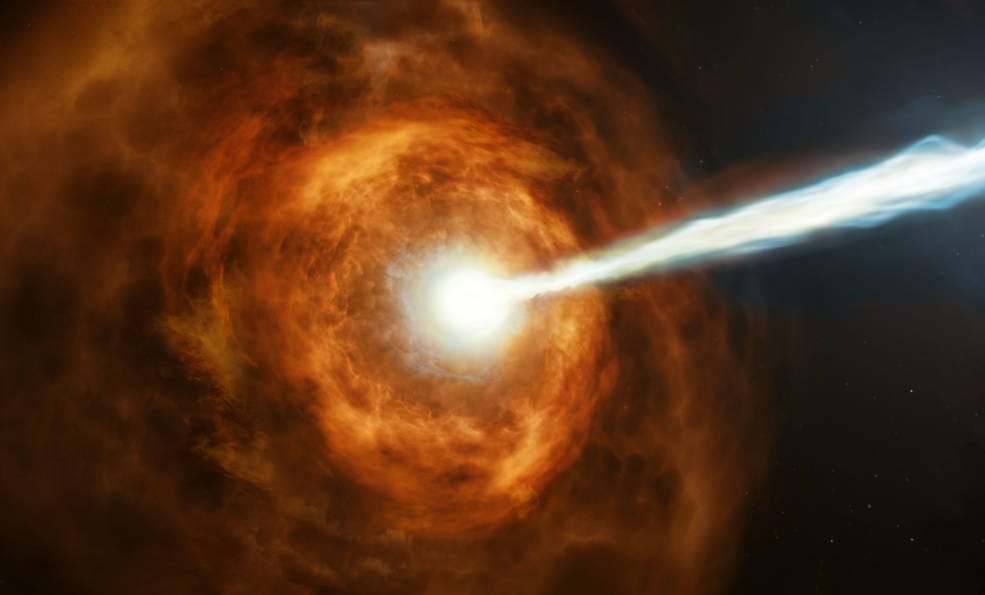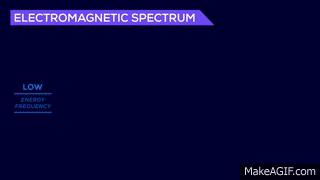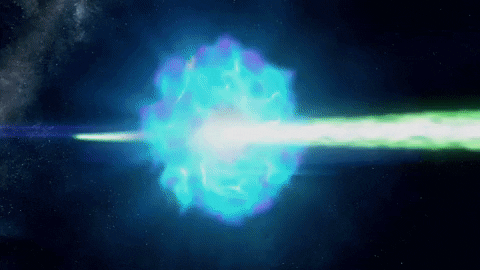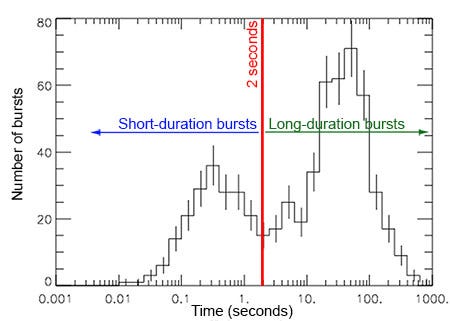We had the sky up there, all speckled with stars, and we used to lay on our backs and look up at them, and discuss about whether they was made or only just happened. - Huckleberry Finn, Mark Twain
Greetings, fellow scientist!
After knowing what a death of a star looks like in a supernova or a hypernova, the terrifying yet most exciting events in the universe await our attention; these are called Gamma Ray Bursts and are the result of the formation of black holes from massive supergiant stars.

Gamma-Ray Bursts (GRBs, in short) are, as the name suggests, bursts of gamma-rays, coming from apparently random directions in the sky. A GRB is an extremely energetic stellar explosion thought to be generated during the formation of black holes.
GRBs are the strongest and brightest explosions in the universe. Although they last for a very short period, they produce as much energy as our sun will produce in its entire lifetime.
What are Gamma-rays?

Gamma Rays have the smallest wavelengths and the most energy of any wave in the electromagnetic spectrum. They are produced by the hottest and most energetic objects in the universe, such as neutron stars and pulsars, supernova explosions, and regions around black holes.
Launched on June 11, 2008, the Fermi Gamma-ray Space Telescope observes the cosmos using the highest-energy form of light. Mapping the entire sky every three hours, Fermi provides an important window into the most extreme phenomena of the universe, from gamma-ray bursts and black-hole jets to pulsars, supernova remnants and the origin of cosmic rays.
Discovery of GRBs

GRBs were discovered accidentally in the 1960s by the American Vela satellites designed to detect possible secretive nuclear weapon tests by the then Soviet Union. In the late nineties, the Italian-Dutch satellite Beppo-SAX managed to measure longer wavelength radiations lingering from them in soft X-rays (called the after-glows) and identified them with faraway galaxies.
Currently, two dedicated satellites are measuring their properties: the Swift and the Fermi satellites. Thousands of GRBs have been detected and some of them are identified to be so far away that they originated when the universe was less than a billion years old (the current age of the universe is 13.7 billion years).
How are the GRBs named?
GRBs are named after the date on which they are discovered: the first two digits representing the year, followed by the two-digit month and two-digit day and a letter with the order they were detected during that day. The letter 'A' is appended to the name for the first burst identified, 'B' for the second, and so on.
How do GRBs form?

An emerging school of thought postulates that GRBs originate from neutron stars with the extremely high magnetic field, called the magnetars.
The current debate about the origin of GRBs is highlighted by the fact that the characteristics of the burst of gamma-rays are ill-understood and the radiation mechanisms responsible for the emission are not quantified.1
Types of GRBs

Astronomers distinguish between the two GRB classes by the duration of their lower-energy gamma rays. Each type has its own progenitors, but both result in the formation of black holes. They are generally classified into two types:
Short Duration GRBs

Short bursts last for less than two seconds. These account for about 30% of gamma-ray bursts. They form when two neutron stars orbiting each other in a binary system collide to form a black hole. Until 2005, no afterglow had been successfully detected.
After a short gamma-ray burst, the observation of X-ray flashes is consistent with small particles of a primary object like a neutron star initially swallowed by a black hole in less than two seconds.2 A small fraction of short gamma-ray bursts are probably produced by giant flares from nearby galaxies.
Long Duration GRBs

70% of GRBs have a duration greater than two seconds. Long Gamma bursts typically continue for a minute or so. They tend to have the brightest afterglows and they have been observed in much greater detail than their short counterparts. They are thought to form when a massive supergiant star undergoes a core-collapse supernova to form a black hole.
Ultra-Long GRBs
Besides short and long GRBs, there is a third class of bursts known as Ultra-Long GRBs. These events are at the tail end of the long GRB duration distribution, lasting for more than 10,000 seconds. Our current observations and the model to explain these aren’t sufficient, so not much is known about their sources.
You may be pondering over the question that how many chances are there for a GRB to ever occur in the Milky Way in future? Well, the question of whether one has ever occurred remains unresolved. But if one is ever directed towards us, it will wipe out the life on earth for sure.
But the chances of occurrence of a GRB directed at us are very low. Till then, we can profoundly continue to unravel the mysteries of our universe.
You May Also Read:
Gamma-ray Burst - Wikipedia



